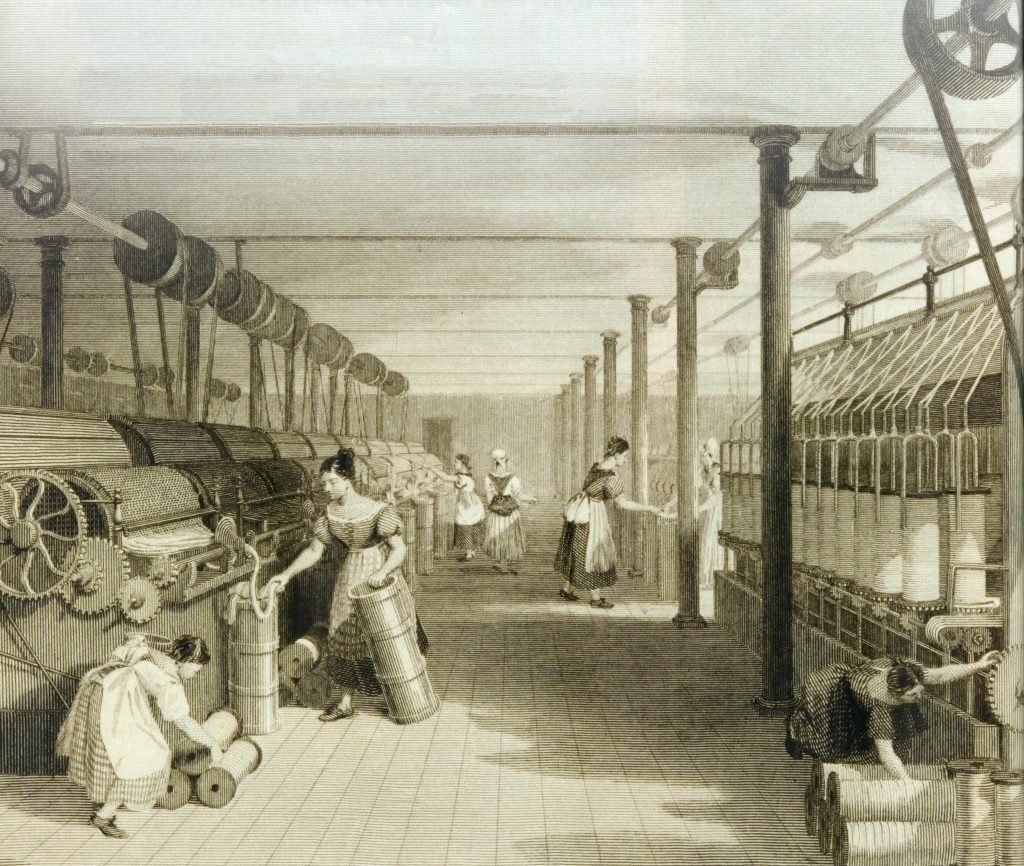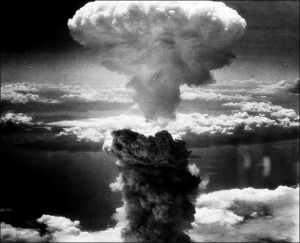Children today spend five days a week going to school for eight hours. During the first half of the nineteenth century in Britain, this was not the case. Instead, children even as young as five or six would toil all day long in factories or in mines. They had no breaks, no time off, and no schooling. Their work often led to horrible accidents, children being injured for life, and children left without an education.
Children laboring, of course, did not start with the British Industrial Revolution. It had been a normal part of life in Europe since the middle ages, when children helped their parents on farms and with household work. The people’s perception of this work, however, changed during the Industrial Revolution, since that is when people began to see this new kind of labor, factory labor, as an injustice and even criminal.1
The Industrial Revolution began in Britain during the 1780’s and rapidly changed the work process and the social relations of work. Prior to the Industrial Revolution, most people worked directly in the production of food, usually as farmers on their own farms. When textile factories began forming in the new factory cities, instead of working on their farms and making what their family needed, people left their farms and moved into the factory cities to make a living. Factory conditions of work, however, were far different from the work rhythms of farm life. In fact, they were brutal in comparison. Factory workers would typically put in between 12 and 16 hour days, working for meager wages. The machines they attended were dangerous, and the workers were often on their feet throughout the day, with perhaps a half-hour break for meals. Among these workers were children, many of whom were as young as five or six years old. Children were valued as workers for their small stature and ability to climb into small places and do things that adults often could not do. This often resulted in mutilation and the loss of appendages for many of these children.2
Children were also valued as workers by the factory owners because of the low wages that they were paid. Men were paid the most in factories, followed by women and then children. These wages, however small, were needed by the families of these children simply to survive. The parents often sent their children out to work to help pay for rent, food, and otherwise help make ends meet.3
One reason that the British public became outraged by child labor practices was the fact that children in factories were not receiving an education. Horace Mann, an American educational reformer, stated:
No greater calamity can befall us as a nation than that our children should grow up without knowledge and cultivation. If we do not prepare them to become good citizens, develop their capacities, enrich their minds with knowledge, imbue their hearts with a love of truth and all things holy, then our republic must go down to destruction as others have gone before it.4
This represents the thoughts of the British at the time, which was being echoed in the United States during its own industrial revolution. People wanted to ensure the future of their nation, which starts with the young. They believed that children should attend school for at least a while.5 This led to several laws being passed to raise the legal age of work.
In 1833, the British Parliament passed the Regulation of Child Labor law to help improve the working conditions for children in factories. The Law limited the age of workers, saying that they had to be older than nine with an age certificate to prove it, and that children 9-13 could not work for more than nine hours a day. Additionally, children 13-18 were not permitted to work longer than twelve hours a day. Along with these work-hour restrictions, the law also made school attendance a two-hour requirement, and said that children could not work at night. Fines for breaking these rules were small, however, so they were frequently violated, often with impunity.6

Many other pieces of legislation were also passed to place limits on the gender, hours, and ages of workers. The Mining Act of 1842 prevented women and girls from working in mines, and the Ten Hours Bill of 1847 set ten as the maximum number of daily working hours for women and children. This act was hated by factory owners because they believed it would hurt the textile industry’s competitiveness worldwide. After these bills, others followed to ensure their effectiveness, and to ensure that they would be properly implemented.7
By 1900, the minimum working age had been raised to twelve years of age and child labor had decreased drastically in Great Britain. However, the introduction of legislation against child labor provoked its share of protests as well. Because of these protests, Parliament established commissions to collect evidence of abusive practices. These were called the Blue Books or Sadler Reports. They interviewed children, parents, factory workers, owners, and even doctors on the condition of children in textile factories. Unsurprisingly, the reports uncovered a range of serious abuses by factory owners and overseers. Unfortunately, most critics just said that the claims were exaggerated in order to continue their money making practices.8
The legislation surrounding the British Industrial Revolution had become very effective by 1900, and child labor and its accompanying abuses had decreased dramatically. By 1900, most children were attending school instead of working in factories. The laws passed finally added up to changing British child labor to being closer to what we see today, a mostly child-free labor system, with children going to school and adults having regulated working hours.
- World History Encyclopedia, 2011, s.v. “Child Labor and Child Labor Laws in Early Industrial Great Britain.” ↵
- James D. Schmidt, “Broken Promises: Child Labor and Industrial Violence,” Insights on Law & Society, no. 3 (Spring 2010): 14–17. ↵
- Robert Whaples, “Hard at Work in Factories and Mines: The Economics of Child Labor during the British Industrial Revolution,” Business History Review, no. 2 (2001): 429. ↵
- Friends’ Intelligencer vol. 28 no. 1 (1871): 336. ↵
- James D. Schmidt, “Broken Promises: Child Labor and Industrial Violence,” Insights on Law & Society, no. 3 (Spring 2010), 14–17. ↵
- Great Britain, “Factories Regulation Act” (1833). ↵
- Steven Toms and Alice Shepherd, “Creative Accounting in the British Industrial Revolution: Cotton Manufacturers and the ‘Ten Hours’ Movement,” MPRA Paper, No. 51478 (2013), 6-8. ↵
- World History Encyclopedia, 2011, s.v. “Child Labor and Child Labor Laws in Early Industrial Great Britain.” ↵



141 comments
Kimberly Rubio
It is unfortunate that children endured these situations during the Industrial Revolution. I have children and can’t imagine how desperately these families needed wages in order to expose their children to these working conditions. These children risked mutilation during long workdays. They also didn’t receive high wages in comparison to the adult men. I am glad people spoke up for the children because schooling is so important. Children are the future.
Seth Roen
The Industrial Revolution was not only driven by steam and machines. It was also by the blood, sweat, and tears of those who worked in the factories. Image living where we didn’t go to school by to a job with well below minimum wage with long 12 hour shifts. Where today, some people expect to be able to live off a part-time job and pay. However, if it were not for their sacrifice, we wouldn’t enjoy comfortable lives.
Santos Mencio
A very informative article about the history of child labor during the industrial revolution in Britain. It’s interesting to learn about how brutal the conditions actually were during that time period. When I think of child labor I typically think of children working on their parent’s farms. It’s important to acknowledge the other side of that coin, namely all the children working in abhorrent conditions in some factory.
Emilia Caballero Carmona
Hey Bailey, the title of your article caught my eye, and I was so intrigued to read about this topic. I like that your article is very detailed, yet well organized and simple. I liked learning about the history of child labor in Britain at least because I think this topic is really important, so we do not commit the same mistakes from the past.
Brittney Carden
I know we learn about child labor in grade school, but it never fails to shock me. I cannot imagine five and six-year-olds today going out and working jobs to begin with. Nevermind jobs that are extremely dangerous and not really being supervised or considering the well-being of these children. It’s also pretty depressing that these children were forced to find work so early in their lives just to help keep their families afloat. Very well-done article.
Malleigh Ebel
It’s insane how many abuses there were within the industrial revolution, especially surrounding children. I couldn’t imagine having to work 12-16 hours a day at 5 years old, which would also effect my education and physical health. It makes me sad that so many children were made to destroy their possible future for their families to eat, as well as possibly being maimed.
Andrea Degollado
Its awful to read the conditions these children faced. It is normal to read about children working in farms during that time or helping at home. However I have read alot of dangers that children working in factories faced. Most of the children working were doing it to help support their families and were in very poor working conditions. In addition I have read some articles, such as this one, about children in our current society that still face poor working conditions and get paid very little.
Sara Guerrero
Child labor was seen as a cheap source of labor and I think this article does a great job explaining why child labor was used and the horrible condition these children had to live through. It was definitely sad to read about children with no childhood or education, it makes us feel greateful now with the opportunities we have and how much the laws have changed, but child labor has gotten worse in other parts of the world.
Nelly Perez
It’s heartbreaking that young children were forced to work during the industrial revolution. Children who helped their families on the farms were understandable, but children working in factories had a lot of dangers involved. They worked for more than an hour and only had one break. A regulation law was created so things could be “easier” on children, even though they still had to work.
Hali Garcia
This is a very informative article. What those children faced working is very disturbing because their injuries can impact them for the rest of their lives. What surprises me the most is that the children were not able to receive an education. It is good that labor laws were created to put a limit on age, gender, and how long the children could work even though they were frequently violated because the consequences were not that harsh.